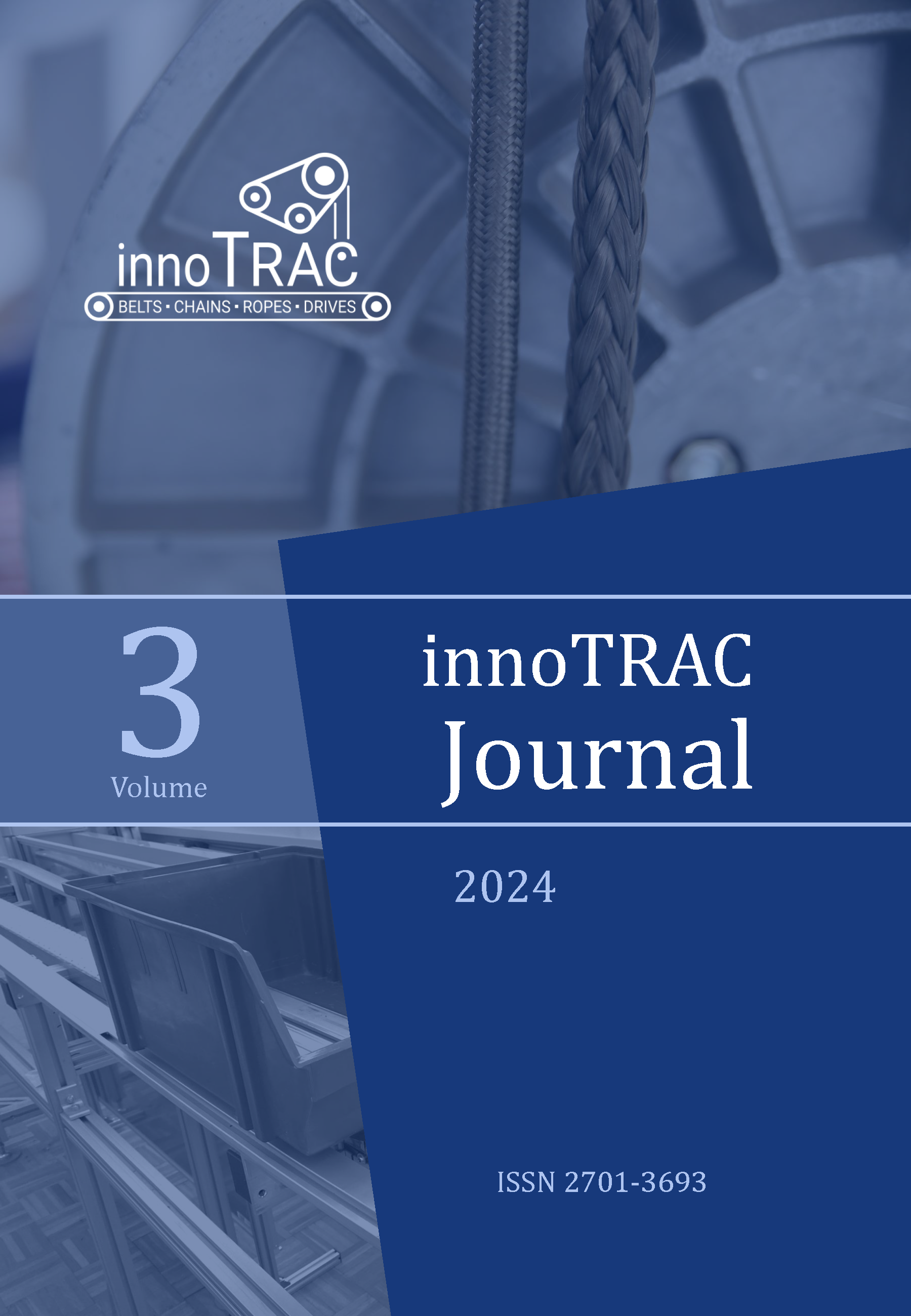GMT based on Hybrid Nonwovens for Compression Molding of Deflection Sheaves in Elevator Applications
DOI:
https://doi.org/10.14464/innotrac.v3i1.762Keywords:
compression molding, deflection sheave, elevator, glass mat reinforced thermoplastics, GMT, hybrid nonwoven, lightweight design, additive manufacturing, pulleyAbstract
Deflection sheaves are a central component in rope dependent elevators.
There is a large market demand for lightweight variants of deflection sheaves. In this
field, products made of cast polyamide have become established. Another approach to
manufacturing lightweight deflection sheaves is the compression molding of glass mat
reinforced thermoplastics (GMT). Typically, market-standard GMTs have a
polypropylene (PP) matrix. In practical tests, it was found that deflection sheaves made
from PP-GMT lead to significant wear in the form of negative impressions of the rope`s
surface in the grooves. Alternative sheaves made from GMT with a polyamide 6 (PA6)
matrix do not show this wear. Since PA6-GMT is less common in the market and only
available at high prices, a cost-efficient GMT was developed. This is made from hybrid
nonwovens, consisting of a mixture of PA6 and glass fibres, which are consolidated by
hot pressing. To analyse the suitability of this nonwoven-based GMT for molding
deflection sheaves, an application-oriented material comparison with commercially
available PA6-GMT was carried out. The focus was primarily on an analysis of the
mechanical properties and flow characteristics. Based on the test results, fundamental
suitability was confirmed, and suggestions for improving the material properties were
derived.
Downloads
Published
How to Cite
Issue
Section
License
Copyright (c) 2024 Hendrik Gerlach

This work is licensed under a Creative Commons Attribution 4.0 International License.
All articles will be published open access under the license Creative Commons Attribution 4.0 (CC BY 4.0).

